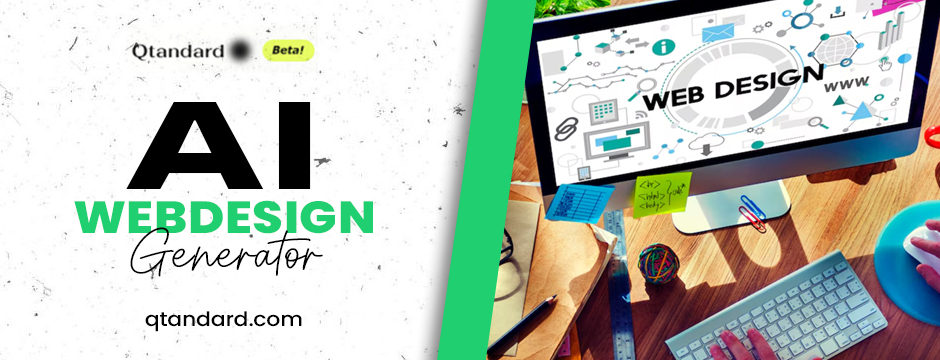In recent years, AI web design generators have revolutionized how websites are created. With the ability to quickly generate sleek, professional designs, these tools save time and reduce the need for advanced coding skills. However, while an AI webdesign generator can be a powerful asset, there are some common pitfalls that users should be aware of to avoid mistakes that could impact the success of their website. In this post, we’ll explore these challenges and how you can steer clear of them to create a standout website for your business.

1. Over-Reliance on Templates
One of the main appeals of an AI web design generator is its ability to offer a wide range of pre-built templates. While this can be a huge time-saver, overreliance on templates can result in a generic website that fails to stand out. Many users simply select a template, fill in their content, and launch the site without further customization.
How to Avoid This Pitfall:
To create a unique online presence, use templates as a foundation but always customize elements like color schemes, typography, and layout. Personalizing your website ensures it reflects your brand’s identity and doesn’t blend in with countless other sites using the same template.
2. Ignoring Mobile Optimization
Although most AI web design generators claim to produce mobile-friendly designs, the reality doesn’t always meet expectations. AI may generate layouts that look great on desktops but become cluttered or hard to navigate on smaller screens.
How to Avoid This Pitfall:
Always preview your design on different devices before launching. Use customization options to manually adjust mobile layouts, ensuring that buttons, images, and text are properly aligned and accessible on smartphones and tablets.
3. Neglecting SEO Considerations
Many users assume an AI web design generator will automatically handle SEO optimization, but that’s not always true. Some AI tools might not prioritize crucial SEO elements like meta descriptions, alt tags for images, or proper header structures, leaving your site with poor search engine performance.
How to Avoid This Pitfall:
Ensure that your chosen AI webdesign generator offers options for adding SEO elements manually. Optimize your content by using relevant keywords, structuring headers properly, and compressing images to improve load times. Tools like Yoast or SEMrush can help you monitor your SEO performance after launch.
4. Sacrificing User Experience (UX) for Aesthetic Design
An AI web design generator often produces visually stunning websites, but these can sometimes come at the cost of user experience. A site may look beautiful but difficult to navigate, have slow loading times, or need clear calls to action (CTAs).
How to Avoid This Pitfall:
Before finalizing your design, test your website’s UX by asking others to navigate through it. Ensure that pages load quickly, the navigation is intuitive, and your CTAs are prominently displayed to seamlessly guide users through the site.
5. Failure to Account for Future Scalability
AI-generated websites are often created with the immediate goal but may need more flexibility for future updates or expansions. For example, if you plan to add new products, services, or features, the generated design might need to be more adaptable.
How to Avoid This Pitfall:
Choose an AI web design generator that allows for easy future modifications. A tool that offers flexibility in its design options enables you to scale up and make changes as your business grows.
Conclusion: Avoiding AI Webdesign Generator Pitfalls
An AI web design generator can be a game-changer for businesses like Qtandard that want to create a professional website quickly and efficiently. However, it is important to know the potential pitfalls that could undermine your website’s effectiveness. By customizing templates, optimizing for mobile, paying attention to SEO, and focusing on user experience, you can ensure that your AI-generated website looks good and performs well. While AI is a powerful tool, a successful website ultimately requires combining technology and human creativity.